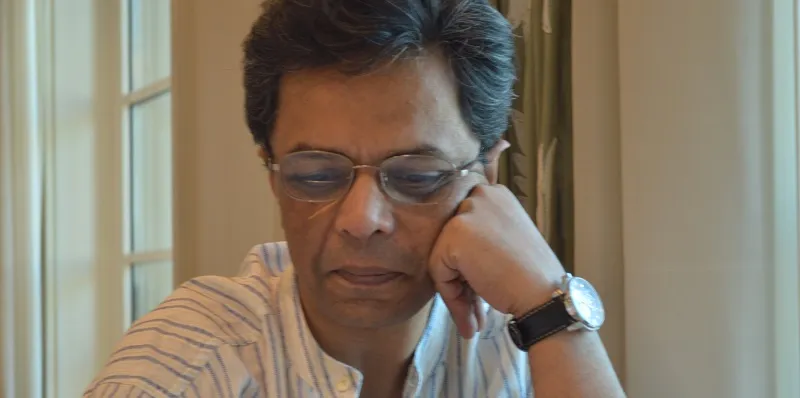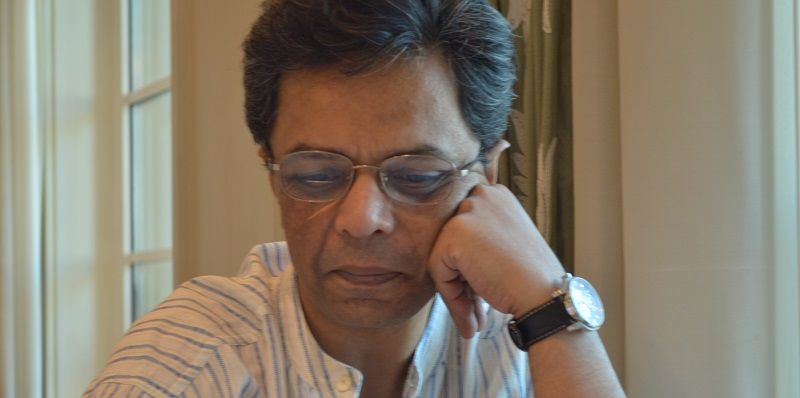VTION pulls data from smartphones to provide real-time radio analytics to advertisers
VTION uses radio and audio metering to analyse consumer behaviour and trends, track consumption patterns, create requirement-based analytics views, and gain a competitive edge in the market.
At a glance
Startup: VTION
Founder: Manoj Dawane
What does the company solve: SaaS-based solution to solve measuring audio consumption in smartphones
Funds Raised: Self funded up to Rs 75 lakh
Sector: Marketing
Headquarters: Mumbai/Delhi
Manoj Dawane, 49, honed his marketing chops in the streets of Mumbai. He began as a trainee engineer in a company building space-grade material and missiles, but early in life, became involved in Philips where a friend told him that he would be successful in marketing.
That spurred Manoj to finish his MBA, and join the marketing division in the telecom, ITES, and sports analytics business. After 25 years of being a corporate marketing honcho, the startup bug bit him in early 2017. Even as the whole world was betting on TV and digital, Manoj realised that radio had survived for 100 years and would continue to survive in the digital era.
“Globally, governments of the world are asking handset makers to put in radio chips into smartphones. There is a reason why this is happening; when all networks fail, radio works even in emergency conditions. I realised then that the industry will only grow,” says Manoj, the Founder of Vtion.

He soon quit his corporate job and began looking at the market dynamics. He realised that there were two opportunities, both were related to audio. The first one was to measure radio; the second to measure audio. But why radio and audio? If one ever got on to the metro you would see them viewing and listening to content. This is digital content can be measured with audio signals.
Vtion provides cost-effective real-time analytics data and media consumption measurement techniques for broadcast radio, bringing together various stakeholders of the ecosystem.
The software pulls audio signals when an app or radio is turned on. City folk say they listen to radio only in cars. But, there are 600 million Indians in smaller towns who still listen to the radio. The measurement of radio in smartphones is yet to kick off and there lies the opportunity for Vtion.
What does Vtion do?
The software tool pulls information on audience engagement and also understands the installation metrics of the person using the smartphone. It gathers insights from all broadcast radio stations, and is an audio consumption analytics tool.
“All of us are listening to content and advertisers can get information on what's happening on different apps to improve targeting,” Manoj says.
The company:
- Gathers independent insights: Will help advertisers get unbiased strategic insights without potential conflict of interests with external agencies.
- Helps target relevant audience: The tool helps advertisers to ensure businesses target the most relevant audience and convert campaigns into sales.
- Gets real-time data: Advertisers can get analytics any time of the day, across geographies and demographic segments, radio channels and apps.
- Generates higher ROI: To create successful and targeted campaigns to connect better with the end user and generate higher ROI.
The tool is targeted towards media agencies, brands, researchers, broadcasters, audio apps, and telecom operators.
The company goes after these industries for a reason.
“The intersection of marketing and technology has been our inspiration. The core thought is ‘digitalisation of marketing research’ and developing effective methods for measuring consumption patterns,” Manoj says. He adds that these measurement methods need to be as passive as possible, with no human intervention so as to make the statistic bias-free.
The key philosophy for Manoj is rooted in the old adages “If you can measure, you can improve” and “Transparent measurement is the first step to industry growth”.
The birth of VTION
Two years ago, Manoj came across a statistic that FM radio in India was growing at a 17 percent CAGR over the last five years and the projected growth was over 20 percent. He became curious and began to investigate why. Some of his investigations were justified. If you go to retail stores there are no radio sets on the shelves for sale, but radio usage is on the rise. The radio is absorbed into the smartphone just like the calculator, watch, torch, and MP3 player. As some statistics point out, over 76 percent people listen to the radio on phones (Source) in smaller cities.
“This was the beginning of a quest to understand what I can do next on the smartphone-based radio. I believe that any industry which is ‘measured’ well has a good growth and will ensure that the entire ecosystem evolves,” Manoj says. He got together a team of techies and began to take the issue head-on in January 2017.
Coincidentally, TRAI had then come out with a paper on Broadcast Radio Audience Measurement (RAM) and followed it up with a suo moto recommendation on the same. When the regulator said radio measurement had to be robust, Manoj’s Eureka moment had come.
“A lot of people said don't do it. But, as an entrepreneur, you do it because you believe in it,” Manoj says.
The problem that Vtion solves is how much to invest in what media and how to measure the effectiveness of the same. Currently the smartphone is the one device that can consume, plan, rate, and share content. This also becomes a gateway for Vtion to track and measure content consumption and provide actionable data to marketers.
Vtion currently measures radio and audio consumption on smart devices. The only known devices that are currently used for passive radio consumption measurement are the portable people meters (PPMs), which are worn like pagers. These detect hidden audio tones within a station or network's audio stream, logging each time it finds such a signal. But these devices have their limitations. Vtion aims to measure radio consumption on smart devices passively. Over 76 percent of radio consumption happens on mobile phones in India. (Source: AZ Research). With Vtion’s proprietary technology, advertisers can measure consumption patterns and make smart decisions.
According to GroupM, radio advertising is a Rs 2,700 crore business.
V Ganapathy, CEO of Axilor Ventures, says: “Solutions for real India through technology can scale faster. The company should, however, make money from advertisers for using the technology.”
The business model for Vtion is evolving. The company charges for the analytics and a piece of the outcome of targeting. Its closest competition in India is Zapr, which got a strategic investor in the form of Star Group-owned HotStar.
Manoj has bet on real India’s audio consumption and it’s likely that Vtion would prove its value by 2020. He has self-funded the company with Rs 75 lakh, and strongly believes the technology can change the way radio advertising works in the country.











